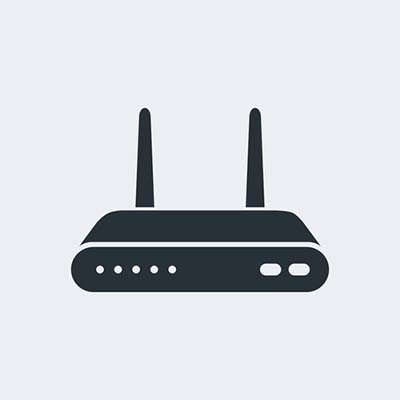Are webpages taking ages to load? Is Netflix freezing when you’re part of the way through a movie? Are your smart speakers cutting out? Especially with older models, routers can malfunction simply because they’ve been on for a while and are working beyond their capacity. Restarting your router gives it time out to clear its memory and cool down. It’s the first thing to try if you don’t know what’s wrong and need to troubleshoot your internet connection.
Reboot or Reset – What’s the Difference?
Don’t mix them up – restarting your router or modem – aka rebooting it – is not the same as resetting it. A reboot means shutting down and starting up again without changing the software settings in any way. Resetting is very different.
A reset means making changes to the configuration that you have in place, typically by returning the device to the factory default settings. That will wipe any custom settings that you’ve specified. Passwords, custom DNS servers and more will all be deleted and default to the original settings. The directions here are for rebooting, not resetting – though you may have to resort to a reset if rebooting and other measures just don’t work.
Reasons to Restart Your Router
Restarting/rebooting is the tried and tested way to troubleshoot all sorts of computer problems. Is Windows playing up? Is your browser slow? Restart the computer. Is your smartphone having problems connecting to Wi-Fi? Power it down and start it up again.
You’ve probably contacted a tech professional or a computer helpdesk, only to be told to try restarting the device. It seems too simple. In fact, it’s the first strategy for the good reason that a lot of the time it works!
It’s not just computers that can benefit from a reboot when problems arise. Other network hardware issues can also be resolved this way. Digital modems (whether they are cable, satellite, DSL or fiber) and routers can also be restored to proper functioning with a restart. And there’s more. Are you having internet connection problems with your laptop and smartphone? Where has the NAS on your laptop gone? Is your web-surfing tediously slow? Is that video you’re streaming stalling or buffering endlessly? 75% of the time or more, a reboot of network hardware will correct connection issues.
The important thing to remember is this: you need to do it all in the right sequence. If you don’t do this, you could make the problem even worse, or even lose your internet connection altogether.
Six Steps to Restart Your Router or Modem
1. Unplug your router and modem, as well as any other managed network hardware, such as network switches. You can leave unmanaged devices on, unless you think that they may be relevant to the issue you’re trying to fix. If there is one, do not use the button marked ‘Reset’ or ‘Restart’, since this will probably initiate a reconfiguration process, restoring the factory defaults. Use the power on/off button or simply unplug the unit.
2. Keep the router or modem unplugged for at least 30 seconds or longer. This will send the message to associated devices and hardware, and your internet service provider (ISP), that the unit is offline.
3. Plug the modem back in again. (This is the device that your connection to` the internet attaches to; so for cable-based internet, the modem attaches to your coaxial cable outside.) You may need to press the power button if it doesn’t start by itself within a few seconds.
4. You now need to wait for 60 seconds at least, while the modem communicates with your ISP, receives authentication and gets a public IP address assigned to it. During this process the lights on the modem will flash before turning solid. When the first three lights have settled, the modem is powered up. The internet LED light may take a bit longer, but when it comes on then it means that communication with your service provider is fully established and you have internet access enabled.
5. Now is the time to plug in the router. You may need to press the power button. (If you have a combination modem-router then this and Step 6 don’t apply. The software gets the process going in the correct order by itself.)
6. This time you need to wait for at least two minutes, so the router can boot up again and any associated devices have time to receive the new private IP addresses that the DHCP service in the router assigns to them. Also turn on any other switches that you powered off, and wait another minute. Based on your network map, power them on from the outside-in.
When everything has powered on again, it’s time to see if your internet connection problem has been resolved. You don’t need to restart your computer or other wireless devices unless some of them are online and some are offline. Restart the computer properly, using the appropriate commands. If for some reason you can’t do this, you’ll need to enter the command ipconfig/renew in the Command Prompt field.
When a Reboot Doesn’t Fix It
If you’re still having problem getting a signal (if the first three lights aren’t solid) then you have three main options: look again at your home network setup; do a full reset (to restore factory default settings and reconfigure); or contact your ISP for additional troubleshooting advice.

